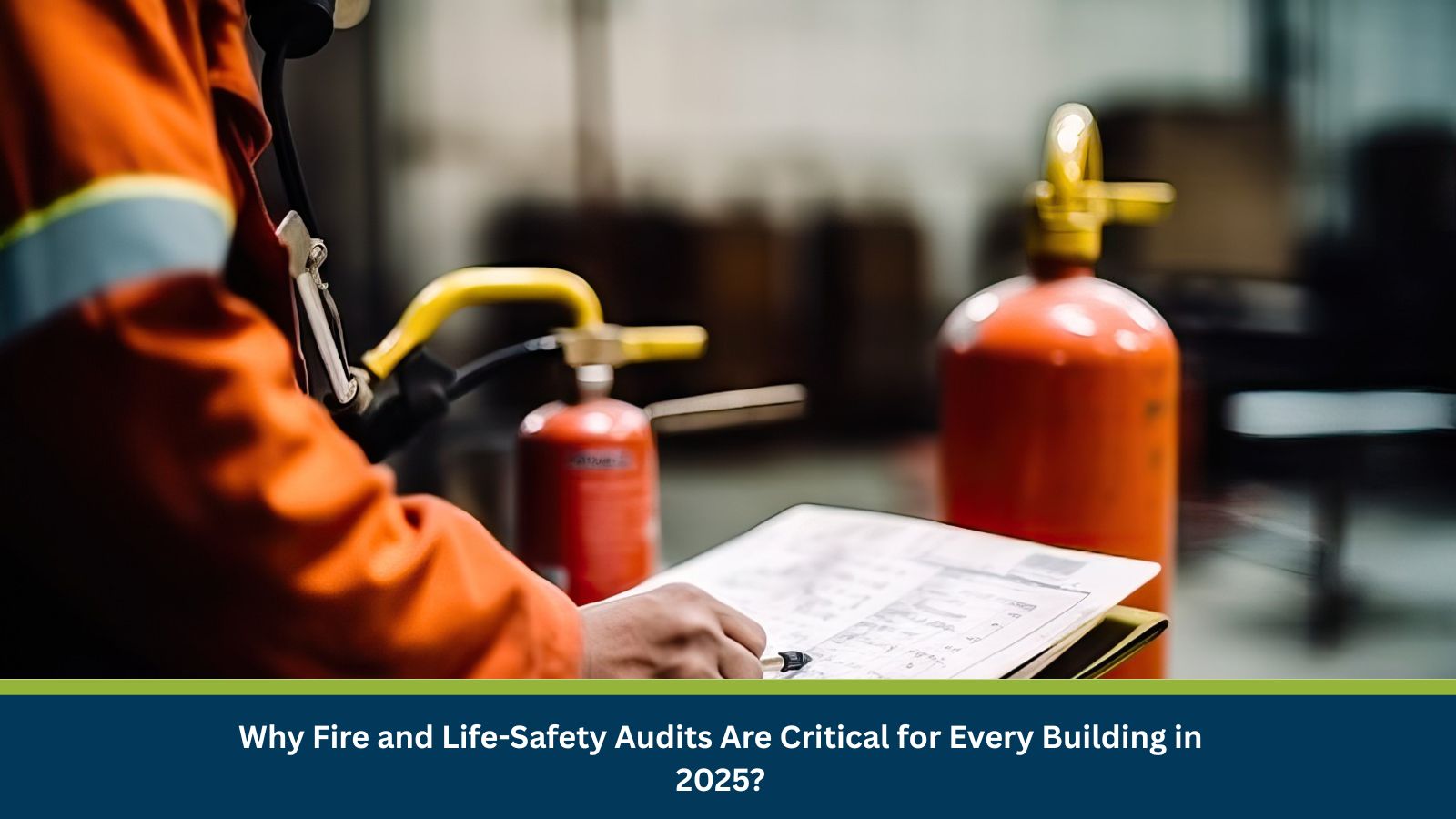Introduction: Rising Safety Imperatives in 2025
In 2025, Fire and Life-Safety Audits have evolved from a regulatory checkbox to a strategic imperative for every organisation. As cities expand vertically, materials diversify, and occupancy levels rise, the potential for fire and safety-related incidents has multiplied. The tragic fire events of recent years across commercial complexes, industrial sites, and hospitals have reinforced one truth: Building Safety Compliance can no longer be reactive, it must be anticipatory and data driven.
Governments are strengthening their inspection frameworks, while corporate boards increasingly view safety as integral to ESG performance and business continuity. In this environment, Fire and Life-Safety Audits not only validate compliance but also reveal systemic risks, operational blind spots, and opportunities for resilience enhancement.
Understanding Fire and Life-Safety Audits
A Fire and Life-Safety Audit is a comprehensive, multidisciplinary assessment designed to identify fire hazards, evaluate risk mitigation systems, and verify adherence to local and global codes. It typically covers fire detection and suppression systems, evacuation routes, electrical safety, emergency response readiness, and staff training.
A robust audit goes beyond checklist compliance. It helps organisations understand why certain vulnerabilities exist from outdated fire alarms to blocked exits, and how they can be addressed through preventive maintenance, procedural training, and design interventions.
For instance, a Fire Risk Assessment might reveal that while a facility meets structural code requirements, its emergency signage or evacuation drills fall short of readiness standards. Addressing these smaller but critical gaps can significantly improve Occupant Safety and organisational preparedness.
The Regulatory Landscape: What’s Changing in 2025
The regulatory context for Fire and Life-Safety Audits in 2025 is becoming more stringent across both Indian and global jurisdictions. The National Building Code (NBC) 2016, currently under revision, includes new mandates on periodic safety certifications and the use of IoT-based monitoring. Similarly, the National Disaster Management Authority (NDMA) has issued guidelines for industrial and healthcare facilities to conduct annual fire safety inspections certified by accredited professionals.
Globally, frameworks such as ISO 45001 (Occupational Health and Safety) and the International Fire Code (IFC) are being integrated into national policies. These reforms signify a shift from incident-based regulation to Regulatory Compliance 2025 a proactive, continuous approach to risk validation.
Failure to comply now attracts higher penalties, insurance liabilities, and reputational damage. Forward-looking organisations are therefore embedding Building Safety Compliance into their governance dashboards and sustainability reporting.
Key Risks and Audit Insights
Recent audit trends reveal three recurring vulnerabilities: lack of updated fire systems, absence of periodic training, and poor documentation. Many facilities rely on obsolete detection systems or fail to integrate alarms with evacuation protocols. Inadequate Emergency Preparedness especially in multi-tenant and high-rise environments magnifies risks during actual incidents.
A data-driven Fire Risk Assessment can pinpoint these weaknesses early. For example, one industrial audit in Maharashtra in 2024 uncovered over 30% of extinguishers past their service date. In another, digital mapping revealed unmonitored storage zones a latent hazard during electrical faults.
These findings highlight why Safety Audit Best Practices now emphasise continuous monitoring, quarterly mock drills, and digital dashboards that track compliance metrics in real time. Ultimately, the goal is not just safety certification it’s operational resilience.
From Compliance to Resilience: The Way Forward
The future of Fire and Life-Safety Audits lies in integration and intelligence. Leading firms are adopting smart safety systems powered by sensors, AI, and cloud analytics. These tools enable predictive maintenance, automated alerts, and real-time reporting all of which enhance Emergency Preparedness and minimise response times.
To build resilience, organisations should:
- Conduct third-party audits every 12–18 months.
- Align findings with Building Safety Compliance dashboards.
- Incorporate Safety Audit Best Practices into facility management SOPs.
- Invest in employee training and fire-drill simulations.
In 2025, the difference between compliance and catastrophe often lies in audit depth and execution discipline. Regular Fire and Life-Safety Audits are not expenses, they are investments in life, reputation, and sustainability.
Partner with MitKat
At MitKat Advisory, we empower businesses to align Fire and Life-Safety Audits with broader ESG, resilience, and compliance objectives. Our experts provide end-to-end support from audit execution and gap analysis to policy advisory, training, and digital risk intelligence helping organisations create safer, more sustainable workplaces.






